-
History & Society
- Education in Pre-war Hong Kong
- History of Taikoo Sugar Refinery
- Hong Kong Products Exhibition
- Local Festivals Around the Year
- Post-war Industries
- Pre-war Industry
- The Hong Kong Jockey Club Archives
- Tin Hau Festival
- Memories We Share: Hong Kong in the 1960s and 1970s
- History in Miniature: The 150th Anniversary of Stamp Issuance in Hong Kong
- A Partnership with the People: KAAA and Post-war Agricultural Hong Kong
- The Oral Legacies (I) - Intangible Cultural Heritage of Hong Kong
- Hong Kong Currency
- Hong Kong, Benevolent City: Tung Wah and the Growth of Chinese Communities
- The Oral Legacies Series II: the Representative List of the Intangible Cultural Heritage of Hong Kong
- Braving the Storm: Hong Kong under Japanese Occupation
- A Century of Fashion: Hong Kong Cheongsam Story
Geography & EnvironmentArt & Culture- Calendar Posters of Kwan Wai-nung
- Festival of Hong Kong
- Ho Sau: Poetic Photography of Daily Life
- Hong Kong Cemetery
- Sketches by Kong Kai-ming
- The Culture of Bamboo Scaffolding
- The Legend of Silk and Wood: A Hong Kong Qin Story
- Journeys of Leung Ping Kwan
- From Soya Bean Milk To Pu'er Tea
- Applauding Hong Kong Pop Legend: Roman Tam
- 他 FASHION 傳奇 EDDIE LAU 她 IMAGE 百變 劉培基
- A Eulogy of Hong Kong Landscape in Painting: The Art of Huang Bore
- Imprint of the Heart: Artistic Journey of Huang Xinbo
- Porcelain and Painting
- A Voice for the Ages, a Master of his Art – A Tribute to Lam Kar Sing
- Memories of Renowned Lyricist: Richard Lam Chun Keung's Manuscripts
- Seal Carving in Lingnan
- Literary Giant - Jin Yong and Louis Cha
Communication & Media- Hong Kong Historical Postcards
- Shaw Brothers’ Movies
- Transcending Space and Time – Early Cinematic Experience of Hong Kong
- Remembrance of the Avant-Garde: Archival Camera Collection
- Down Memory Lane: Movie Theatres of the Olden Days
- 90 Years of Public Service Broadcasting in Hong Kong
- Multifarious Arrays of Weaponry in Hong Kong Cinema
-
History & SocietyGeography & EnvironmentArt & Culture
-
View Oral History RecordsFeatured StoriesAbout Hong Kong Voices
-
Hong Kong Memory
- Collection
- All Items
- Manufacturers with Worker´s Background
Recently VisitedManufacturers with Worker´s Background
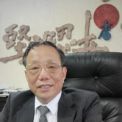
- An 8-year development bubble of Chit Shing after its establishment in 1969, Chit Shing began to t...
Chit Shing was established with a capital of $3,000 in a plant unit measuring less than 300 square feet at a monthly rent of $300. Machines purchased were paid back by installments. Chan Wah Cheung worked long hours in this plant, frankly admitting that he was very ignorant about everything during the company’s start up. Not knowing how to handle orders, buy and prepare materials or calculate costs, he asked trade veterans about everything. He also urged his former employer to outsource some orders for him processing. In the company’s early years, Chan Wah Cheung bought raw materials from a manager called Yiu at Tin’s Chemicals. Openly admitting that he was lacking funds, he requested Tin’s Chemicals to allow his new firm a 60-day credit period. Yiu appreciated Chan Wah Cheung’s frankness and determined to help this young man solve his cash flow problems. Chit Shing started with only one man when it was established in 1969 but later expanded to 70-80 workers by 1977/78. Business was booming during these years and labour costs were low. The factory operated every night until 2 am, producing stationery and then women's wallets. Reviewing his company’s accounts eight years after its establishment, Chan Wah Cheung was shocked to find that accumulated losses had reached around $500,000. His mother and the skilled master in charge of molding repeatedly advised him to close the business down.
Chan Wah Cheung summarised five reasons for his failure over this period. Firstly, the output value of the products was too low. Secondly, competition within the trade was intense. Thirdly, the company’s costing calculation was outdated and did not take utilities or other operating costs into account. Fourthly, prices were suppressed by the intermediary trading firms. Fifthly, payments by customers had fallen into arrears. In the early years of establishment, Chit Shing had to rely on trading firms for overseas orders. In the weekdays, Chan Wah Cheung visited the offices of these trading companies in Tsim Sha Tsui and Central. Lacking bargaining power, he was accustomed to prices being kept deliberately lowered by his contacts there. After making reviews, Chan Wah Cheung changed his strategy in 1978. He decided to abandon the production of women's wallets and instead contact only trading firms whose customers specialised in brands. He then switched to producing stationery for cartoon brands such as Snoopy, Disney, Star Wars and Hello Kitty, offering to his partners enhanced quality and guaranteed delivery. Chit Shing began to turn a profit. It eventually not only maintained its business, but also expanded to bag products. Chan Wah Cheung believed that as brand products generally carried higher prices, they offered more reasonable profits and larger, more stable order volumes. As Chit Shing’s business gradually moved into profitability, obtaining bank loans became simpler and the company was able to expand its plant and equipment. Chan Wah Cheung had mixed feelings, believing that running his business was just like sailing against the wind! When labour costs were low in the early 1970s, his company made losses, but then the company started to make profits when wages began to rise during the late 1970s. Chan Wah Cheung frankly admitted that taking into account the limited size of his plant and workforce, negotiations with trading firms were difficult. As a result, he felt he could only impress these firms by his sincerity and low prices.
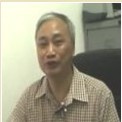
- Growing in a squatter factory producing fabrics in Fuk Wah Street
Au Kwan Cheung was born in Guangzhou in 1947. A skilled master of machinery, his father knew how to assemble and repair knitting machines and operated a small knitting factory in Guangzhou producing fabrics and garments before the late 1940s. After settling in Hong Kong in 1949, his father repaired knitting machines for well-established local knitting factories. In the early 1950s, Au Kwan Cheung came to Hong Kong with his mother to reunite with his father. The family lived in an old-type building at Pei Ho Street where several newborn brothers and sisters were added to the family. In the early 1950s, Au Kwan Cheung’s father rented the ground floor shop of a four-storey residential building at Fuk Wah Street and started a squatter factory producing fabrics which also accommodated the whole family. A covered area of over 1,000 square feet at the ground floor shop’s back-end lightwell was used to store the yarn winding and knitting machines. A wooden cockloft with a living area of about 200 square feet was also constructed inside the shop to accommodate a bed of 4-5 feet plus a table. The toilet and kitchen were also located in the lightwell. The family not only worked at the factory but also ate and slept there. As the factory usually operated at night, Au Kwan Cheung had to sleep on makeshift wooden planks in the factory’s doorway or next to the machines. His father's squatter factory produced knitted fabrics which could be used for making T-shirts. There were about five or six machines in the whole factory which operated days and nights. Au Kwan Cheung’s parents worked the days, during which his father supervised the knitting process while his mother was responsible for winding and preparing yarn. Another worker was employed to operate the machine at nights.
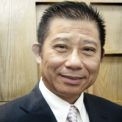
- His Principles of career success: "Doing things that others don’t", "Excelling in things that ot...
"Doing things that others don’t", "Excelling in things that others do" and "Exploring new things at which others excel". Leung Wai Ho continued to stress the importance of integrity and earnestness in doing things to this day. When developing a new product, he had three principles: "Doing things that others don’t", "Excelling in things that others do" and "Exploring new things at which others excel".
"Doing things that others don’t". The first principle is perhaps best illustrated by two examples. In the 1970s, Leung Wai Ho went to the US for product promotion, bypassing local intermediary trading firms and co-operating with a Silicon Valley company to produce electronic watches. Dailywin also constantly developed new watch making materials such as using glass to make watch dial plates in the early 1980s. The advantages of his policy were superior clarity and durability. The company later switched to sapphire which were 20 times more expensive than glass but never wore out. In 2003, Dailywin became the first company in the world to use plastic glass to make watch cases and watch bands. It also made cases from hard-wearing kitchen countertop material Corian. In the 1980s, cowboy chains were used as watch bands.
"Excelling in things that others do". Leung Wai Ho insisted on maintaining integrity with customers and putting quality first. He ultimately believed that the quality and reputation of Hong Kong and foreign-made goods were better than those of mainland equivalents. While quality was related to technology and machinery, Leung Wai Ho required his employees to achieve “zero returns” by being excellent “goalkeepers”.
"Exploring new things at which others excel". Dailywin stopped producing electronic watches and using textureless zinc alloy materials in the 1980s. In 2003, Leung Wai Ho sold Dailywin’s chain of Time Zones retail stores and instead turned to investing in the production of computer software. He paved the way for his move to the electronics industry with a number of Chinese Americans in developing large-scale project management software such as “8th Manage”. That same year, Leung Wai Ho also transferred Dailywin’s listing status to Wai Yuen Tong Medicine Holdings Limited and served as a non-executive director of the new venture. In doing so, he freed up more time for his DGAEFI activities and community affairs and so was able to get better acquainted with mainland officials.
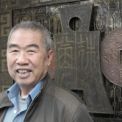
- Lacking academic qualification urged David So and his partners to found their business, Technolog...
In 1972, David opened a business with Tsang Ming Pui and Tam Kam Ho – his colleagues in Ampex Co. They set up Elec Computer Component Limited. Tsang had studied in Tong Nam Radio Institute earlier and later became Manager of the Testing Department in Ampex Co. Being good at personnel management and budgeting, Tsang was promoted to Supervisor of the System Design Department before he left. Tam came to Hong Kong in 1963. He was David’s colleague at Guangzhou Nitrogen Fertilizer Plant for several years and later entered Ampex Co. to work in the Testing Department through the recommendation of David. When they started their own business, Tam was in charge of production.
As David, Tsang and Tam did not have a university degree, their prospect of promotion in either a USA or a British company would be restricted. Therefore they decided to leave Ampex Co. to set up their own business and look for other opportunities in their career. At that time, the three of them saw that there was no production of circuit board in South-East Asia, so they determined to open a factory for the production of double-side plate perforated and printed circuit board for the markets in Hong Kong and South-East Asia. From 1969 to 1972, they did their own researches by devoting all the time after work in doing experiments until 11 every night. David thought that in the 1970s, production of any electronic parts was good in Hong Kong.
In the 1960s, Ampex Co. mainly manufactured computer memory. The three of them had only limited knowledge in circuit board. They began with reading books on basic equipment, doing primitive experiments with simple tools such as nail heads, films and Xi Hu brand perforation machines, as well as learning technologies of electroplating and perforation. Only after mastering the key technologies did they set up a factory for production. David considered it important to have a long-term plan for research and development. In doing research and development for new products, they should try their best to surpass the present technologies instead of focusing on customer satisfaction so that they could cater to new technologies in future.
During 1979 to 1980, David was thinking about developing telecommunication products. Dr Taller (editor’s note: translated version) of The Hong Kong Polytechnic Institute advised David that their company’s technologies should exceed their counterparts by three grades. At that time, before exporting to USA, Hong Kong telephones should obtain certification by the Federation Communication Commission (FCC) and pass the Electro-Magnetic Interference (EMI) test. In order to ensure that their products could pass the test without delay, David and his staff conducted vibration tests in an open area in Sha Tau Kok first. During those days, one could not find any space with more than 700 feet in length in the urban area. Therefore, David had to do the tests in the open space in the remote region. Moreover, the facilities for testing in neither The Hong Kong Polytechnic Institute nor The University of Hong Kong were fully developed. David and his staff had no choice but to risk being questioned by the police for doing the tests in the wilderness. David was satisfied with the research and development work in the early days and thought that hands-on experience could compensate for his inadequate academic qualification.
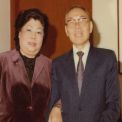
- Kin Hip was first established as a machinery factory in Portland Street
Kin Hip was located at No. 326 Portland Street where its neighbours included van rental and soft drinks shops and various two- to four-storey residential tenements. When the factory started in 1949, the Suns lived in San Lau Street at To Kwa Wan. At noon, Mrs. Sun would prepare lunch in To Kwa Wan and bring it all the way to Mong Kok. She and her husband later rented accommodation in a tenement opposite their factory. Their main business back then was the manufacture of metal molds for use as antimony pot handles and water flask spouts. Key customers included the Ting Tai antimony pot and Gold Coin Brand vacuum flask factories. As Sun Kin Chao was less educated, Mrs. Sun took charge of the accounts while taking care of the children at the factory. In doing so, she used an abacus to calculate costs and prepare invoices. On one occasion she undercharged $600 when calculating product prices for the Gold Coin Brand factory. Fortunately, the vacuum flask factory’s cashier was very honest, taking the initiative to inform Mrs. Sun about her mistake and repaying the underpayment in full.
In those days, it was not a common practice to prepare drawings for making molds, with factory staff usually relying solely on their eyes to gauge sizes. Such techniques were taught to younger workers by their mentors. As Sun Kin Chao had not learned formal drawing skills during his apprenticeship in Shanghai, he tended to dash off designs as rough sketches. After setting up his own business, he began to recruit apprentices, eventually taking on some 40 staff in such a way. In those days, applying to learn skills by becoming apprentice to a mentor required strict etiquette. There was also a solemn ceremony where each apprentice’s parents presented snacks and the apprentice got on his knees and served tea to his prospective employer. While it was then very common for mentors to physically discipline their apprentices, Sun Kin Chao’s wife gave him a hard time whenever he tried to do so. As Sun Kin Chao was not fluent in Cantonese when he first came to Hong Kong, Mrs. Sun had to assist, standing by his side to answer questions whenever he taught apprentices. Mrs. Sun later attended evening classes to study accounting and English to help better manage the factory accounts.
Copyright © 2012 Hong Kong Memory. All rights reserved.
| Set Name |





